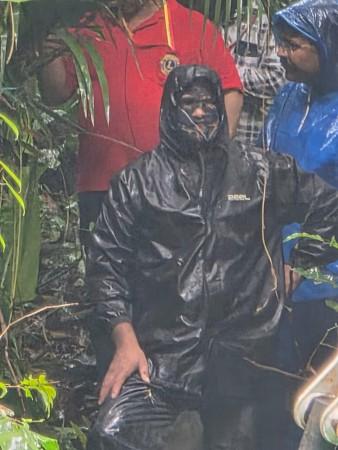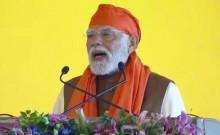
In a significant development, the Karnataka court has transferred custody of the individual known as the "masked man" to the Special Investigation Team (SIT) for a 10-day period. This move is part of the ongoing probe into the Dharmasthala case, which has captured public attention over the past two months. The SIT had requested custody of the masked man, now identified as C.S. Chinnaiah, also known as Chenna, to conduct a thorough investigation into the allegations surrounding the case.
The Dharmasthala case has been under intense scrutiny due to the sensational claims made by the masked man. Initially, he alleged the existence of mass graves in the temple town of Dharmasthala, claiming that women and girls had been raped and murdered, with their bodies buried in secret locations. These allegations prompted authorities to conduct excavations at 17 different sites in Dharmasthala, hoping to uncover evidence that would substantiate the claims.

However, the investigation took a dramatic turn when the SIT, after interrogating Chinnaiah for over 15 hours, concluded that he had been misleading the authorities. It was revealed that Chinnaiah had been coerced by certain individuals to make these allegations and push for a specific line of investigation. This revelation led to his arrest on charges of providing false information, effectively turning the case on its head.
Political and Historical Context
The arrest of Chinnaiah has sparked a political uproar, with the Leader of the Opposition, R. Ashoka, demanding an apology from the Karnataka government to the people of the state. The case has not only raised questions about the veracity of the claims but also about the motivations behind them and the potential involvement of other parties.
The Dharmasthala case is not an isolated incident in legal history. Similar cases have occurred where false claims and misleading information have led to extensive investigations, only to be debunked later. One such historical event is the infamous Salem witch trials of the late 17th century in colonial Massachusetts. During these trials, a series of hearings and prosecutions were carried out based on accusations of witchcraft, leading to the execution of 20 individuals. The trials were later criticized for their lack of concrete evidence and reliance on spectral evidence, which was essentially based on dreams and visions.
In the Dharmasthala case, the masked man's allegations were initially taken seriously, leading to significant resources being allocated for the investigation. The SIT's decision to arrest Chinnaiah after uncovering the truth behind his claims highlights the importance of thorough and unbiased investigations in such cases. It also underscores the potential consequences of false allegations, which can divert attention and resources away from genuine cases that require immediate attention.
Media Influence and Investigation Challenges
The SIT's investigation into the Dharmasthala case is ongoing, with authorities continuing to explore all angles to ensure that justice is served. The case has also brought to light the challenges faced by law enforcement agencies in distinguishing between genuine whistleblowers and those who may be motivated by ulterior motives. This is particularly relevant in cases involving allegations of mass graves and sexual assault, where the stakes are incredibly high, and the potential for public outrage is significant.
The Dharmasthala case also raises questions about the role of media and public perception in shaping the narrative of such investigations. The initial claims made by the masked man garnered widespread media attention, leading to heightened public interest and pressure on authorities to act swiftly. This phenomenon is not new and has been observed in other high-profile cases where media coverage has influenced the course of investigations and public opinion.
In the context of the Dharmasthala case, the media's role in amplifying the masked man's claims may have contributed to the urgency with which the authorities pursued the investigation. However, it also serves as a reminder of the need for responsible journalism and the importance of verifying information before it is disseminated to the public.
As the SIT continues its investigation, the focus will likely shift towards identifying the individuals who allegedly coerced Chinnaiah into making the false claims. This aspect of the case is crucial, as it could reveal a broader conspiracy aimed at discrediting the temple town of Dharmasthala or targeting specific individuals or groups.
The Dharmasthala case serves as a cautionary tale about the complexities of legal investigations and the potential pitfalls of acting on unverified information. It also highlights the need for robust legal frameworks and investigative processes that can withstand public pressure and ensure that justice is served without prejudice.
















